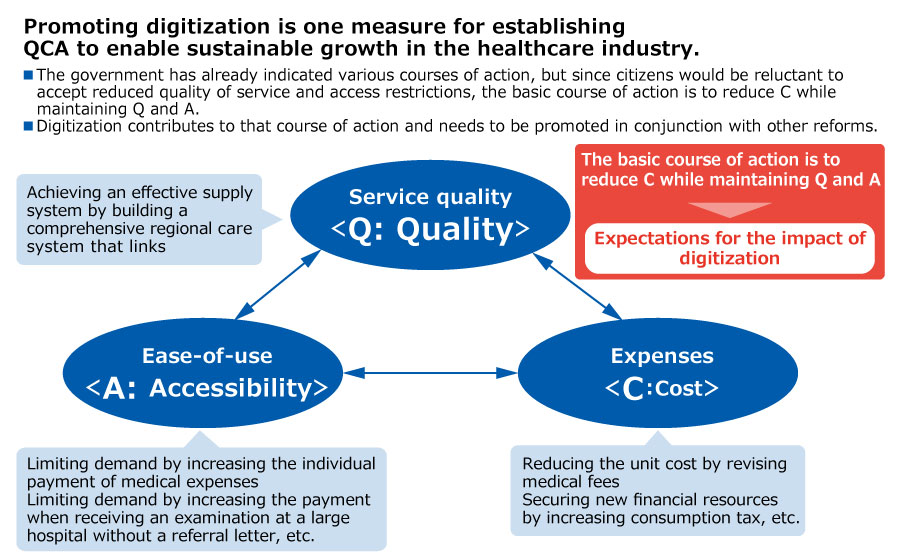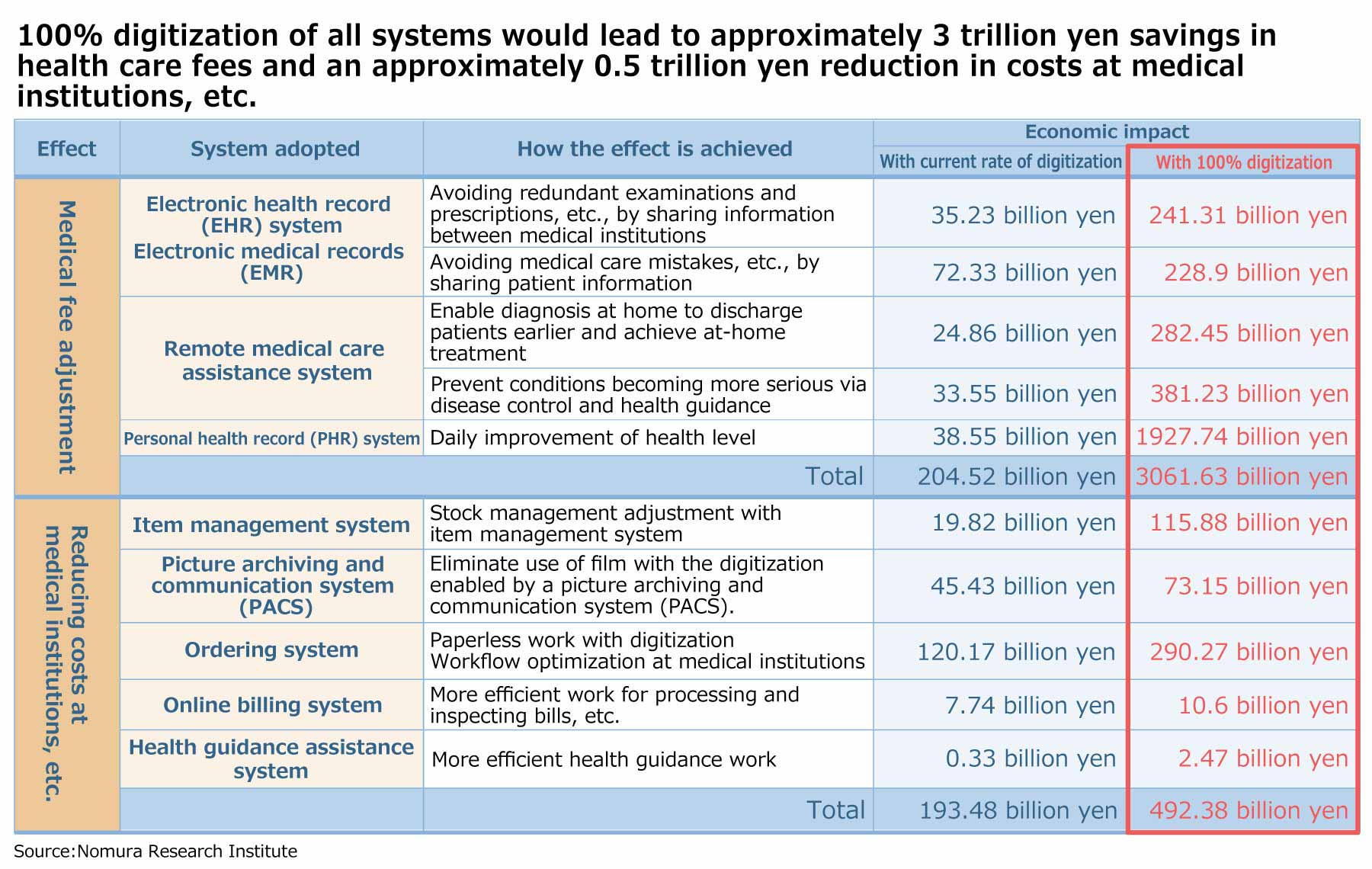
The future of the healthcare industry with digitization
When a patient suddenly visits a hospital other than their regular hospital, the doctor can access the patient's past clinical data and proceed with treatment. Another patient can use remote diagnosis to receive medical care at home. These are the kinds of things that will become normal with digitization of the healthcare industry, which includes health management, medical care, and nursing. The Japanese government is also starting initiatives for digitization, but how far has it proceeded? Let us take a look at the challenges and possibilities of digitization, such as its social and economic impacts, from surveys and research conducted by Nomura Research Institute, Ltd (NRI).
Healthcare must ride the wave of digitization
A good balance of QCA (Quality, Cost, and Accessibility) is required for sustainable growth in the healthcare industry. Due to the increasing ratio of medical cost related public expenditure, the promotion of digitization is attracting attention as a method for maintaining the balance of QCA and enabling sustainable growth. For example, adopting a system for sharing patient information between doctors, nurses, and pharmacists can reduce time and trouble compared to making phone calls or meeting in person. Pharmaceutical companies also conduct research and development by analyzing big data, which may lead to the development of new drugs with revolutionary therapeutic effects.
So how far has digitization come in this industry?
For example, although the rate of digitization of medical records at medical institutions is almost 100% in countries such as Norway and the Netherlands, it is only about 30% in Japan. This goes to show that digitization in Japan has fallen behind.

Who receives the benefits of investment?
One of the main reasons that digitization is not making progress is the gap between the parties that pay the costs of digitization and the parties that receive the benefits of digitization. The main parties that pay the costs of digitization are medical institutions. On the other hand, the main parties that receive the benefits of digitization are the patients that receive improved quality of medical care and adjusted (reduced) health care fees, and the national government, local government, and health insurance associations that pay health care fees. Patients and government paying less means less revenue for the medical institutions. Why would they make an investment in digitization if it would lead to less revenue?
An economic impact as large as 3.5 trillion yen
However, when looked at from the point of view of the whole society, digitization of the healthcare industry is very meaningful. According to calculations by NRI, 100% digitization of related systems would lead to approximately 3 trillion yen savings in health care fees and an approximately 0.5 trillion yen reduction in costs at medical institutions, etc. With national health care fees currently exceeding 40 trillion yen, a reduction of 3.5 trillion yen would have quite a large impact.
Not only would digitization have an economic impact, but we can also expect the quality of medical care to improve. For example, doctors can use shared data and AI, etc., to perform accurate diagnoses based on a wider range of information. Digitization will lead to various benefits for individuals, insurers, medical institutions, and the government, etc.

Large-scale infrastructure is scheduled to begin operation in 2020
Measures for narrowing the gap between the parties that pay the costs of digitization and the parties that receive the benefits of digitization are needed for digitization to make progress. Public investment by the government is required, like in foreign countries. A great movement is now starting. The Ministry of Health, Labour and Welfare announced plans for two large-scale infrastructure projects from the year 2020. One of these is a National Health and Medical Information Network, which will gather together the medical information of individuals, which is currently scattered over different hospitals and pharmacies. The other is a Health Care Data Platform that consolidates the information in various public databases and provides it to researchers and insurers. The government aims to use these two infrastructure projects to provide optimal health management, diagnosis, and medical care to people.
In order to achieve this infrastructure, we need the various sectors to make preparations now, including the patients themselves. For example, medical institutions and pharmacies need to start training their human resources so that they can start new initiatives for supporting the daily health management of their patients. Patients themselves also need to start proactively managing their health by utilizing various services. Looking ahead to these two infrastructure projects starting operation in 2020, the various sectors need to deepen their mutual understanding while promoting new initiatives by proactively sharing data, etc. If the rate of digitization can be accelerated, then Japan should be able to catch up with other countries.
Profile
-
Kenta Taguchi
-
Yuki Yoshizawa
-
Miki Shitamatsu
* Organization names and job titles may differ from the current version.